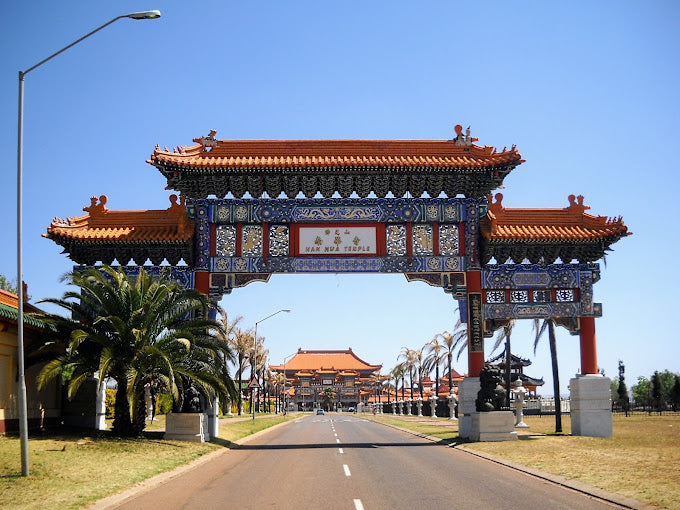
Bronkhorstspruit
Share
The Rich History of Bronkhorstspruit
Bronkhorstspruit is located in the Gauteng province of South Africa, on the border with Mpumalanga, about 50 km east of Pretoria. This klein dorpie is known for its natural beauty and outdoor activities. It is also home to the Nan Hua Buddhist Temple, the largest Buddhist temple in the Southern Hemisphere. The temple is located in Cultura Park and is the African headquarters of the Fo Guang Shan Buddhist order.
Bronkhorstspruit is named after the Bronkhorstspruit River, which is a tributary of the Wilgerivier. The name may have come from the Afrikaans word bronkors or bronkhorst, which means watercress.
The town was founded in 1858 by Voortrekkers who settled near the Bronkhorst Spruit creek, which was originally called Kalkoenkransrivier, meaning "turkey cliff river". The town was originally named after C.J.G. Erasmus, who owned the land on which it was built, but changed its name to Bronkhorstspruit in 1935.
- 19th Century Voortrekkers: The establishment of Bronkhorstspruit can be traced back to the movement of the Voortrekkers in the 19th century. These Dutch-speaking settlers migrated from the Cape Colony into the interior of South Africa, seeking autonomy and land for farming. Bronkhorstspruit’s strategic location made it a vital point for trade and travel between Pretoria and the eastern parts of the country, facilitating the movement of goods and people.
- Battle of Bronkhorstspruit (1880): One of the most significant events in the town's history is the Battle of Bronkhorstspruit, which took place during the First Boer War. On December 20, 1880, Boer forces launched a surprise attack on British troops stationed in the area. The Boer victory not only elevated their morale but also marked a crucial turning point in the struggle for Boer independence from British rule. This battle is commemorated in local historical narratives, emphasizing the town's role in the broader context of South African history.
This was the first military action of the First Boer War, a victory for the Boers and a humbling experience for the British.
Constructed in 1950, the Bronkhorstspruit Dam is a significant landmark that plays a crucial role in the region's economy. It supports agricultural activities by providing irrigation and is a popular recreational spot for fishing, boating, and picnicking. The dam is surrounded by beautiful scenery, making it a favored destination for both locals and tourists seeking outdoor activities.
Opened in 1992, the Nan Hua Temple opened in 1992, and is the largest Buddhist temple in Africa and serves as a center for Buddhist practice and cultural exchange. Nestled in a tranquil environment, it attracts visitors from various backgrounds who come to explore its architecture, gardens, and cultural programs. The temple also plays a vital role in promoting understanding and harmony among diverse communities.
As of 2025, Bronkhorstspruit is a thriving town that could harmoniously blend historical charm with contemporary amenities. The preservation of cultural heritage should become a priority to it’s community.
Looking ahead, Bronkhorstspruit is poised for growth with ongoing development projects and a focus on sustainable practices. The community is committed to enhancing its appeal as a vibrant destination for future generations, balancing progress with the preservation of its rich historical and cultural identity. This forward-looking approach promises to maintain Bronkhorstspruit's unique character while welcoming new opportunities and residents.
